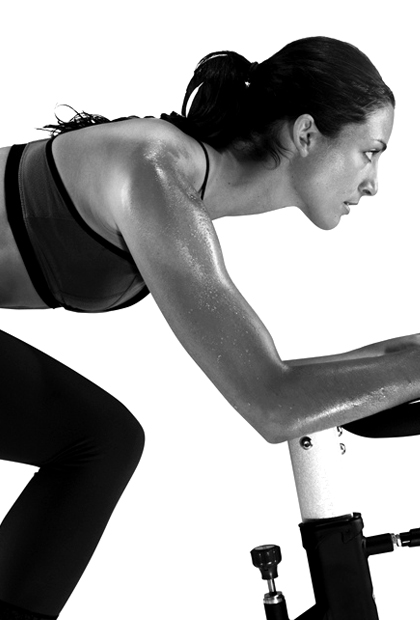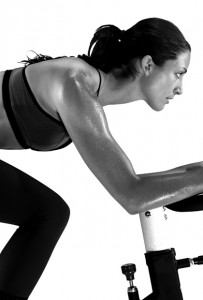Sweating is the production of a clear, salty fluid secreted by millions of eccrine or sweat
glands in the skin which are located all over the body. Sweat is comprised mostly of
water, but also contains a tiny amount of electrolytes (e.g., sodium, chloride, potassium,
magnesium) and urea, a colourless nitrogen-containing substance also found in the urine.
Even though people have about the same number of sweat glands, the amount of sweat
differs among individuals. How much sweat released by each gland is determined
by several factors, including age, gender, environmental conditions and a person’s
acclimatization to them, and, pertinent to this discussion, fitness level. Of all the official
rules and guidelines set for prescribing exercise and ensuring a training response, the
principle of perspiration or “sweat” response is hardly ever mentioned. So, it is not
surprising that many exercisers and exercise professionals ignore, take for granted, or
do not recognize the importance of breaking a sweat during exercise sessions. On the
contrary, sweat response should be considered as one of the major training responses to
watch for. Why? The major function of sweating is to keep the body’s core temperature
at a safe level. Exercising turns up your body’s internal heating system. While you pump
your arms and legs, your body temperature rises and millions of those tiny sweat glands
are activated and sweat is released. As your sweat evaporates, it cools you off. Sweating
is your body’s built-in cooling system–it is your body’s way of getting rid of that extra
heat. In general, as a person’s aerobic fitness level increases, so does his/her ability to
sweat. That means, as a person’s exercise capacity improves, sweating begins earlier in
the exercise session and increases in the overall volume of sweat. The body is simply
becoming acclimatized and more efficient at cooling.
During moderate intensity exercise, sweat losses can average up to 2 L of water per hour.
You need to stay hydrated during exercise for this very reason. Without an adequate
supply of water, your body cannot sweat and your internal temperature will be too high
for you to workout normally, putting you at risk of heat exhaustion or worse. Remember
to drink more water when humidity is high—sweat evaporates more slowly on humid
days when the air is already saturated with moisture.
Side note: Usually, sweat from exercise has no odor, but increased nitrogen in sweat can
have a “sour” smell. An increase in nitrogen can be due to
1) ingesting more protein thanis being utilized for building muscle tissue and maintaining important body functions
(usually seen in high-protein diets),
2) fasting or very low calorie diets–the body breaks down its own muscle to supply needed nitrogen to maintain important functions, and
3) muscle-wasting diseases.
So, next time you exercise, make a mental note of when you begin to sweat. If you are
not sweating at all, you need to increase your intensity. Talk to your trainer to work out a
plan to start sweating.
Dr. Sheri Melton, PhD is Professor, Assistant Chair &
Coordinator of Graduate Studies, Exercise Science Division.
Department of Kinesiology, West Chester University,
West Chester, Pennsylvania, USA. She is also an American College of Sports
Medicine (ACSM). Certified Exercise Specialist and a Fulbright-Nehru Scholor.
She is a renowned researcher and scholar in the field of exercise science.

